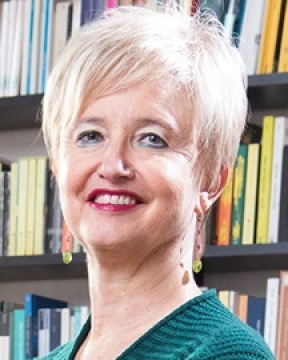Abstract:
The mechanical behavior of materials endowed with specific microstructure, characterized by complex non-linear behavior and complex internal sub-structure (micro), strongly depends on their microstructural features. In particular, in the modelling of these materials, such as particle composites, that are polycrystals with interfaces or with thin or thick interfaces, as well as rock or masonry-like materials, the discrete and heterogeneous nature of the matter must be taken into account, because interfaces and/or material internal phases dominate the gross behaviour. And this is definitely ascertained. What is not completely recognized instead, is the possibility of preserving memory of the microstructure, and of the presence of material length scales, without resorting to the discrete modelling that can often be cumbersome, in terms of non-local continuum descriptions.
In particular, for materials made of particles of prominent size and/or strong anisotropic media, by lacking in material internal scale parameters and in the possibility of accounting non-symmetries in strains and stresses, the classical Cauchy continuum (Grade1) does not always seem appropriate for describing the macroscopic behaviour taking into account the size, the orientation and the disposition of the micro-heterogeneities. This calls for the need of non-classical continuum descriptions [1-3], that can be obtained through multiscale approaches, aimed at deducing properties and relations by bridging information at proper underlying sub-levels via energy equivalence criteria. In the framework of such a multiscale modelling, the non-local character of the description is then crucial for avoiding physical inadequacies and theoretical computational problems. In particular, in problems in which a characteristic internal (material) length is comparable to the macroscopic (structural) length [4]. Among non-local theories, it is useful to distinguish between ‘explicit’ or ‘strong’ and ‘implicit’ or ‘weak’ non-locality [1, 3, 5]; where implicit non-locality concerns generalised continua with extra degrees of freedom, such as micromorphic continua [2] or continua with configurational forces [3].
This talk wants firstly to focus on the origins of multiscale modelling, related to the corpuscular(molecular)-continuous models developed in the 19th century to give explanations ‘per causas’ of elasticity (Cauchy, Voigt, Poincare), in order to find conceptual guidelines for deriving discrete-to scale-dependent continua, that are essentially non-local models with internal length and dispersive properties [5, 6]. Then, a discrete-to-scale dependent continuous formulation, developed for particle composite materials basing on a generalized version of Voigt’s molecular/continuum approach, is proposed. Finally, with the aid of some numerical simulations - concerning ceramic matrix composites (CMC), microcracked media and masonry assemblies – focus will be on the advantages of the micropolar modelling with respect to other generalised continuum formulations [9-12].
|

